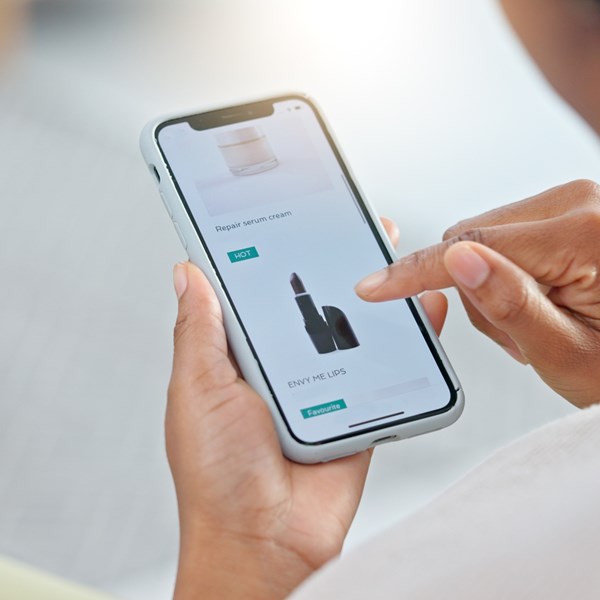Scandinavia and the Baltic States have long enjoyed strong political and economic ties, trading across the Baltic Sea for centuries. Denmark, Sweden, and Norway - often collectively referred to as Scandinavia - are renowned for innovation and the development of disruptive technologies. Sweden and Denmark consistently rank in the top ten for the world’s most innovative countries (Global Innovation Index report, World Intellectual Property Organization, 2004).
In contrast, Latvia and Lithuania, which together with Estonia make up the Baltic States, typically rank far lower on the scale. The index is based on a number of factors, however a significant weighting is given to the number of patent and trademark applications filed for a given country. Whilst this may hamper the Baltic States’ position in the Global Innovation Index, it cannot be argued that they do not contribute to tech development in Europe. The Baltic States, in particular, Estonia, excel in the digital and fintech start-up sectors, where other forms of intellectual property, such as copyright and trade secrets are more prevalent. Notable global brands in these sectors originating from the Baltics include Skype and Vinted, for instance. These are not the exception: Estonia, boasts almost 1,500 start-ups and 7.7 unicorns per million capita many of which are within digital tech. This is a world-leading statistic and is likely a large part of the reason for Estonia’s number 16 ranking in the 2024 report.
The innovation culture is distinct but thriving in Scandinavia and the Baltic States, however both regions share a common lack of female representation within the innovation ecosystem despite a healthy talent pool.
INVENTORS
Scandinavia has a reputation for high societal gender equality, yet this does not translate to high representation of named female inventors in patent applications. An 2022 EPO report titled “Women’s Participation in Inventive Activity” provides an overview of female inventorship activity in the EPO’s contracting states between 2010 and 2019. In the context of the report, ‘female inventorship’ refers to the number of patent applications filed at the EPO comprising a female inventor. The data show that female inventorship in Scandinavia is amongst the lowest of the EPO contracting states.
The report (page 10) shows the average female inventor rate in Scandinavia to be 12%, with Denmark and Sweden at 12.4% and Norway at 11.2%. In contrast, the average female inventorship rate in the Baltic States was roughly double that of Scandinavia in the same time period: 30.6% in Lativa, 21.4% in Lithuania, and 20.7% in Estonia, with an averaging 24.2% for the region.
It is difficult to obtain accurate statistics on the number of women educated and working in STEM in each of the regions, however a tentative analysis would indicate that this disparity is not due to a lack of female talent in Scandinavia. For instance, page 22 of the EPO report from 2022 shows that over 30% of researchers and 40% of those employed in STEM careers in Denmark and Sweden are women, along with 30-35% of STEM PhD students.
The numbers weren’t reported for the Baltic States, however a 2023 article from Eurostat indicates that the Scandinavian rates are overshadowed by the Baltic States, where around 64% of the science and technology workforce in Lithuania, around 63% in Latvia, and around 59% in Estonia are women.
The conversion of female STEM graduates to named female inventor is interestingly roughly the same in both regions, with both notably falling short of a representative level of female inventorship.
This trend can also be seen in the numbers of female start up founders in each of the regions.
FOUNDERS
Start-up founders typically have diverse backgrounds, often combining technical and business expertise. It is therefore difficult to directly correlate the number of female inventors with the number of female founders. However, given that technology companies will often have the lead inventor as a co-founder, examining these numbers may provide insight into the broader issue of low female representation in the innovation ecosystem.
One might expect that Scandinavia would have a higher rate of female founders given the number of healthcare and biotech start-ups in Denmark, Sweden and Norway – subjects where gender disparity at university level is lower than that for a subject such as engineering and computer science. This appears not to be the case, however.
Again, comprehensive data are difficult to find, however an article on the Nordic Business Forum reports that the percentage of female entrepreneurs in the labour force in both Scandinavian and Baltic countries is in the single digits. This is below the 10% average for EU contracting states. Interestingly, however, in digging into the data further, some positive outliers are revealed. Estonia, for example, boasts exceptionally strong female representation within climate and fintech starts ups with around 44% of companies having at least one female co-founder. There are therefore clearly a number of factors at play.
In order to succeed as a start-up founder, it is of course essential to fund raise. Here, we again see significant disparities in the funding rates for female and male founder teams, which may further be driving women away from a career as a founder.
A comprehensive report by Unconventional Ventures analyses key data regarding the distribution of VC funding in Europe based on the gender of the founding teams. The report shows that from 2017 to 2023, between 80 and 90% of VC funding was allocated to all-male founding teams, whereas less than 2% was allocated to all-female founding teams. Mixed teams fared slightly better and attracted anywhere between around 3 and 18% of funding in a given year.
The ‘leaky pipeline’ within STEM is a known phenomenon, and there are both social and societal reasons for why women do not remain within STEM after education. The conversion from STEM graduates to active participant in the innovation sector however appears to fall far below what could be expected of a ‘leaky pipeline’.
Could it be the case that women are less interested or less inspired by the career opportunities within innovation? Or could it be that the ‘glass ceiling’ is particularly difficult to break in this arena?
One of the career opportunities within innovation is working as an IP professional, such as a patent attorney, and encouragingly, a look at the number of female patent attorneys in Europe indicates that women are indeed keen to work in innovation.
IP PROFESSIONALS
A 2024 article “Women and IP – the long road to equality” published by the epi shows that the Scandinavian countries are towards the bottom of the table when it comes to the rate of female European Patent Attorneys (EPAs). Denmark has just over 35%, Sweden just over 30%, and Norway at just under 30%, placing them in positions 18, 21, and 28 out of the 35 countries included in the report.
Lithuania in contrast tops the table with nearly 80% of the EPAs in Lithuania being female. Latvia also ranks highly with over 50% (7th position), whilst Estonia is towards the bottom of the list at a little over 25% female EPAs (30th position). The high proportions, as well as significant variation between the countries, may be attributable to the relatively low overall number of EPAs and therefore a direct comparison between Scandinavia and the Baltics based on these data may not be appropriate.
However, what can potentially be derived from the report, is that in both regions, the number of female EPAs appears to be more aligned with the number STEM graduates in stark comparison to the very low number of female founders. A STEM degree is a requirement for becoming an EPA, and therefore it appears that entering the patent professional does not have the same barrier to entry as participating in the innovation sector as an inventor or (scientific) founder.
CLOSING THOUGHTS
Overall, gender representation in the innovation ecosystem is more homogenous across the Scandinavian countries than across the Baltic States. The Baltic States have great variation in the levels of female representation between the countries and between the different sectors, perhaps due to the relative immaturity of the start-up ecosystem.
Though there is greater variation, the data however point towards women being generally better represented in the innovation ecosystem in the Baltic States than in Scandinavia, which may come as a surprise to many given Scandinavia’s reputation for gender equality.
There are several factors that may influence women's participation in the start-up ecosystem, and this article only skims the surface. In particular, the clear differences in sector focus, start-up culture, and political climates between Scandinavia and the Baltics likely mean that the barriers to entry for women in each region vary. Despite this, it is difficult to deny that there are shared learnings that can be used to accelerate the move towards gender parity in both regions.
Some examples of the differences and thus potential opportunities include:
Social welfare systems
Scandinavian countries offer extensive social welfare systems that provide a high level of job security and benefits. This can make the prospect of leaving a stable job to start a business less attractive, particularly for women who may prioritize financial stability and security.
Sector focus
The entrepreneurial success seen in the Baltics often centres around fintech and digital technologies, which are high-growth sectors with relatively rapid trajectories. Whilst women are perhaps less likely to study these subjects, entering the start-up sector in such industries may be considered less ‘risky’ than in the healthcare or pharmaceutical sectors, which form a large proportion of Scandinavia’s start-up scene. The route to market in the health sector is typically longer and more expensive due to the need for lab space and compliance with strict regulatory requirements. This means that long-term commitment - therefore the ability to withstand long-term uncertainty - is needed from founders.
Government policies and initiatives
Scandinavia offers robust support for female founders through a combination of government initiatives and networking opportunities. In Denmark, programs like Innovation Fund Denmark and the Danish Growth Fund provide financial support and resources, while organizations like KVINFO and WiLD, offer networking and mentorship. Sweden’s Gender Equality Agency and Feministiskt Initiativ advocate for gender equality, complemented by progressive parental leave policies that facilitate work-life balance. Norway’s ‘Innovation Norway’ provides targeted funding and recognition through awards like the Female Entrepreneur of the Year. These efforts collectively aim to create an inclusive environment that encourages and supports female entrepreneurship across the region.
International influence
Data on the rate of foreign-born founders in the various regions are difficult to find. However, immigration policies in the Baltics are much more founder-friendly, which could lead to international female founders preferring the region. The Baltic states offer attractive visa programs for start-up founders, each with unique benefits. Estonia’s e-residency and start-up visa programs provide flexibility and ease of access, Latvia’s start-up visa process is often touted as ‘quick’ and ‘supportive’, and Lithuania’s programs emphasize innovation and growth potential. These initiatives may make the Baltics an appealing destination for international entrepreneurs looking to establish and grow their businesses. While Scandinavia also offers visas to non-EU start-up founders, the terms are typically more restrictive, and the approval process is often rigorous and slow.
While the Baltic states lead in female representation among inventors and IP professionals, both regions face challenges in translating their talent pools into female-led start-ups. Addressing these disparities and fostering further collaboration could unlock potential and drive more inclusive innovation across the Baltic Sea.






